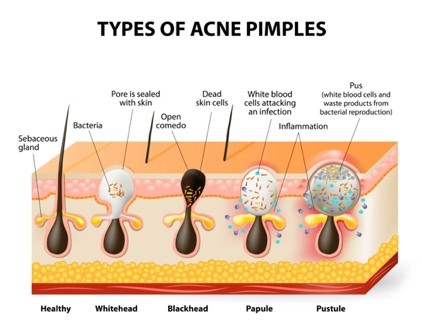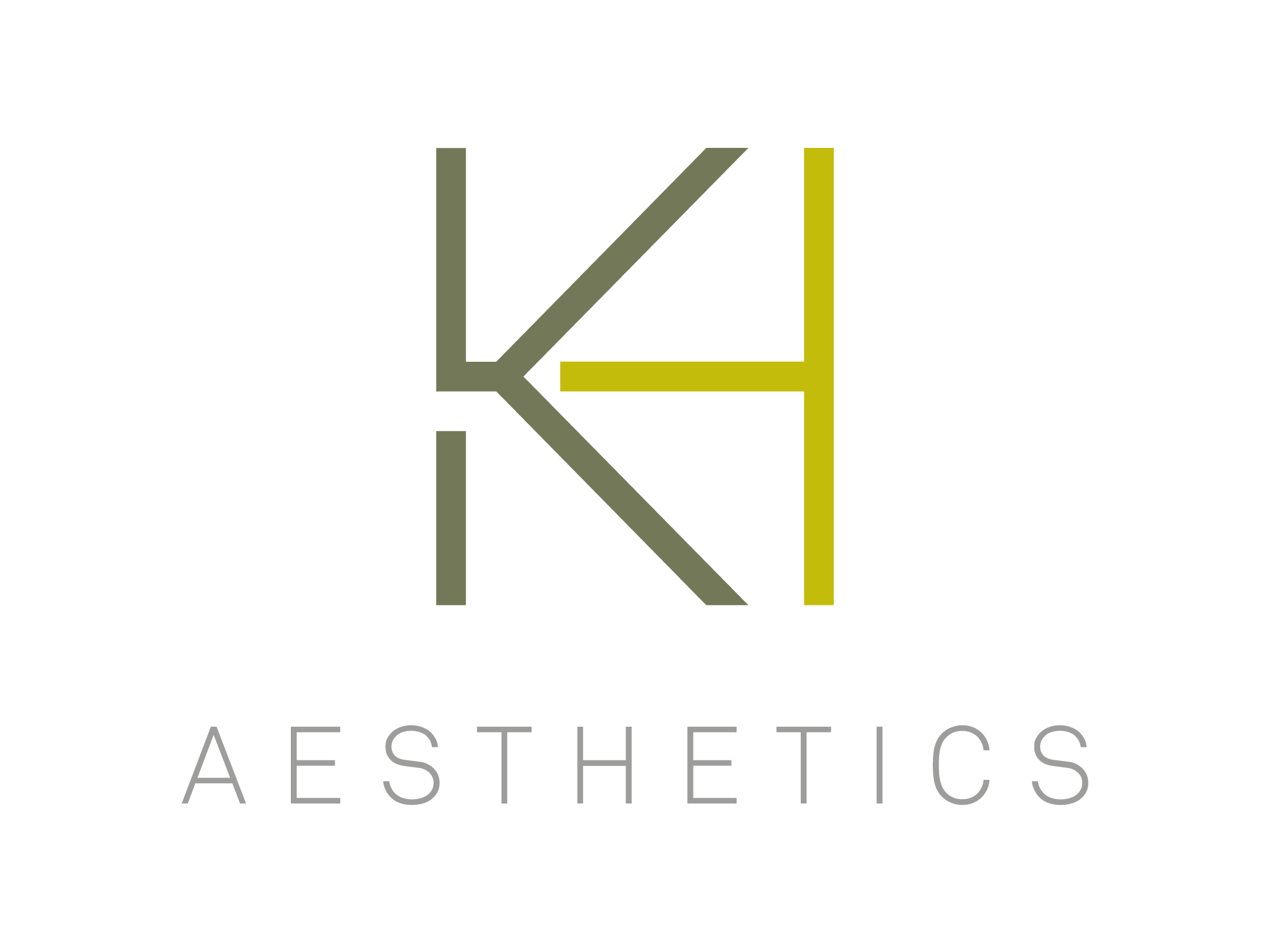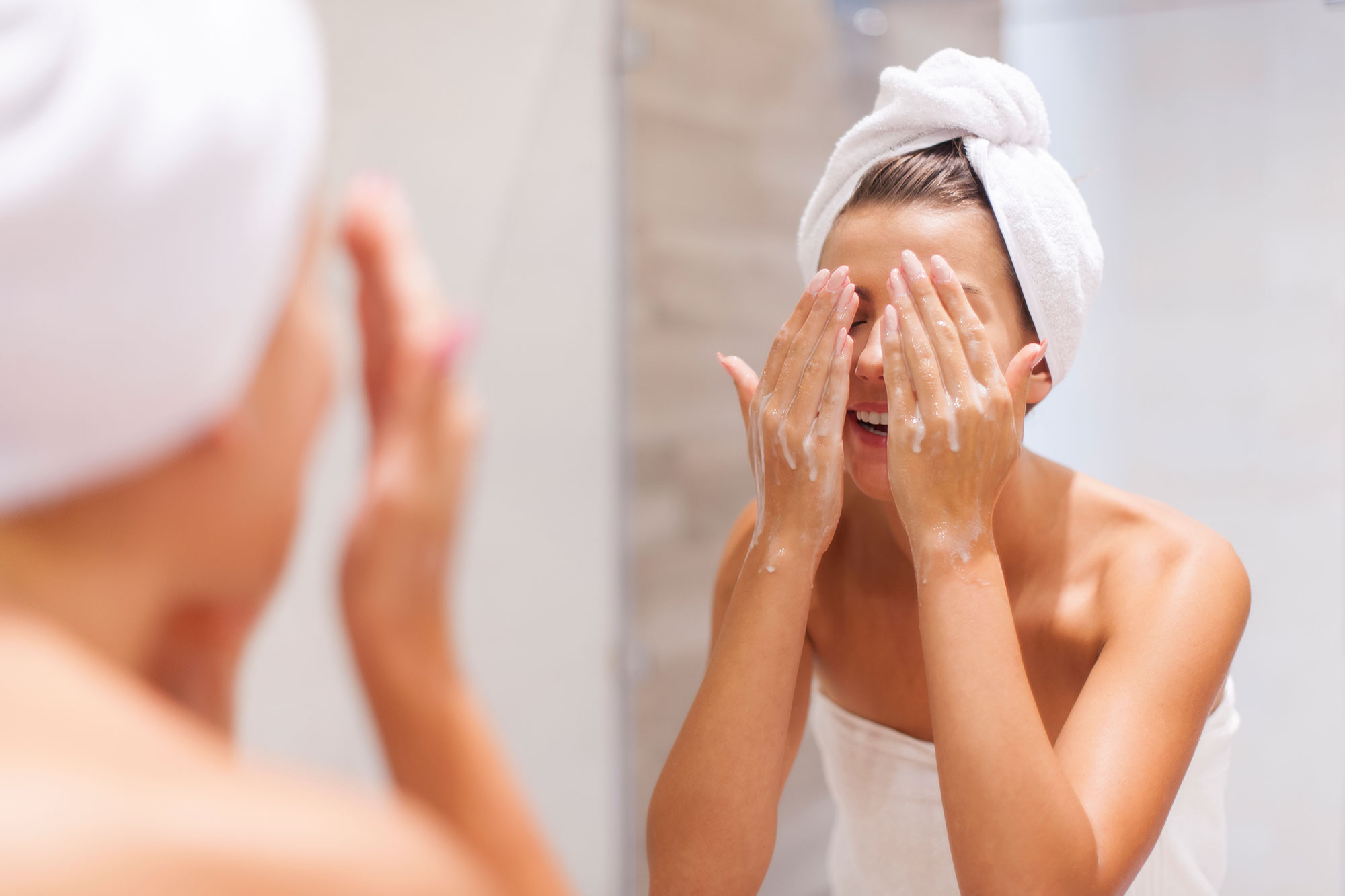Acne is a chronic inflammatory disorder of the pilosebaceous unit (hair follicle) characterised by blackheads, whiteheads, papules, pustules and cysts and often leads to scarring. The first chain of events that usually lead to acne, especially acne in the face, are in puberty when the body starts to produce testosterone, which then stimulates the sebaceous glands to produce excess sebum that is then trapped in the hair follicle.
Abnormal follicular hyperkeritinization and dead cells are attached to this sticky substance. Bacteria then colonies, cells cannot exfoliate, and a hard mass is produced within in the skin. Acne is usually genetic and peak acne years are in females 10-15, and in males 13-18. Over 40% of females will have acne during some part for their life and over 35% of males will be affected also. With today’s lifestyle, stress levels and increased intake of medication, adult acne is certainly on the rise.
Grade of Acne Severity
Qualitative
- Grade I – Comedones and papules (including Milia)
- Grade II – Superficial Papules and Pustules
- Grade III – Deep Pustules and Nodules
- Grade IV – Nodules and Cysts = Cystic Acne
Quantitative
Severity is classed as mild, moderate or severe.

| Non-Inflammatory Lesions | Inflammatory Lesions | Severity | |
| Grade I | Less than 10 | Less than 10 | None |
| Grade II | 10-25 | 10-20 | Mild |
| Grade III | 25-50 | 21-30 | Moderate |
| Grade IV | More than 50 | More than 30 | Severe |
| Teenage Acne
Male & Female |
Adult Acne
Mostly Female |
|
| Location | Primarily on the T-Zone | Primarily on the U Zone |
| Form | Numerous comedones, whiteheads, blackheads and inflammatory lesions. | Mostly inflammatory lesions.
Comedones often minimally or clinically visible. |
Types of Acne
- Acne Vulgaris (medical term for common acne)
- Acne Mechanica: Caused by heat, friction and pressure against skin. Often as a result of wearing sports equipment, such as, helmets/baseball caps, also known as spot induced acne. Preventative measures include; wearing absorbent material under sport equipment and showering immediately after activity.
- Excoriated Acne: When pimples are scratched or picked to the point of wounding the skin, can be due to acne vulgaris or if there are imagined blemishes that are barely visible. This type of Acne is a vicious cycle, constant wound damage can lead to PIH (Post-Inflammatory Pigmentation).
- Acne Conglobata: Also known as Nodulocystic Acne, more common in males. It is characterised by inflamed nodules which can connect with other nodules under the skin. Often seen as a result of steroid and growth hormone use.
- Acne Fulminans: A severe yet rare form of Acne Conglobata. Usually only affects adolescent males and is often associated with systemic symptoms such as a weight loss, fever and painful joints.
- Acne Cosmetica: Triggered by the use of cosmetics, not just make-up but hair products (shampoo, conditioner and gel). Often affects the cheeks and forehead, not just in relation with products applied but how and if they are removed.
- Acne Medicamentosa: Caused by or aggravated by medications such as, antiepileptics, halogens, antituberculosis, antidepressants and certain immunosuppressant medications.
- MASKNE: New to the acne classification is Maskne, a type of Acne Mechanica. Simply by wearing masks and face coverings, breakouts are triggered by excess heat, moisture and friction on the skin; a breeding ground for bacteria.
10 things you need to know
- Stress. This is the No. 1 contributing factor to Acne, subliminal stress in particular. Anxiety caused by external pressures such as exams, interviews, presentations, moving to a new house, weddings, divorce, bereavement etc. exacerbate Acne thus causing breakouts. Being able to recognise what has caused the anxiety and perhaps seeking help is the first step in lessening the effects on our body and skin.
- Hydration! The most common misconception about Acne skin is that it needs to be dried out. Wrong! It is vital that Acne skin is well hydrated, from the inside and out. In addition to the obvious, drinking lots of water, moisture must also be applied to the skin externally.
- Medication. Certain medications such as, hormonal or insulin stimulating drugs can induce Acne. Be wary of taking any strong medication for Acne. Some medication, such as Roaccutane, can cause severe side effects that are very unpleasant and sometimes life- threatening.
- Sebum. Sebaceous glands produce excessive amounts of sebum in Acne defective follicles. Over production of sebum blocks the skins’ pores, causes blackheads and whiteheads, which are the primary lesions of Acne. This produces a waxy layer on top of the skin, instead of the normal 50% water, 50% oil.
- Diet & Lifestyle. This really does make a difference! Lack of sleep, smoking, pollution, alcohol and inactivity have been linked to acne. Drink plenty of water, at least 2 litres per day. Cut out foods with a high glycemic index (GI). To make a real difference, try cutting it out for 3 months, then; reintroduce it occasionally as a treat.
- Dead Skin Cells. Normal skin sheds one or two layers of dead skin cells per day. Acne skin sheds four or five layers per day! An excessive amount of dead skin cells clogs up the hair follicles, allowing bacterial infection to set in. Infection causes inflamed, red and sore lesions on the skin.
- Hormones. Hormonal imbalance in the body during in periods of change such as puberty, pregnancy and menopause can exacerbate Acne.
- Genetics. Most Acne is genetic. Fact. There isn’t much we can do to change this but there are other steps we can take to help. Taking supplements such as Essential Fatty Acids, Vitamin C and Zinc, all greatly improve the skin’s health.
- Bacteria Acne has its own type of bacteria called Cutibacterium acnes (C. acnes) known formally as Propionibacterium acnes (P. acnes), which lives on the surface of the skin. Bacteria from dead skin cells, which are not detaching normally, cause inflammation and infection.
- Skin Care Routine. Essential! The correct diagnosis and consistent skincare routine are essential in winning the fight against Acne.



